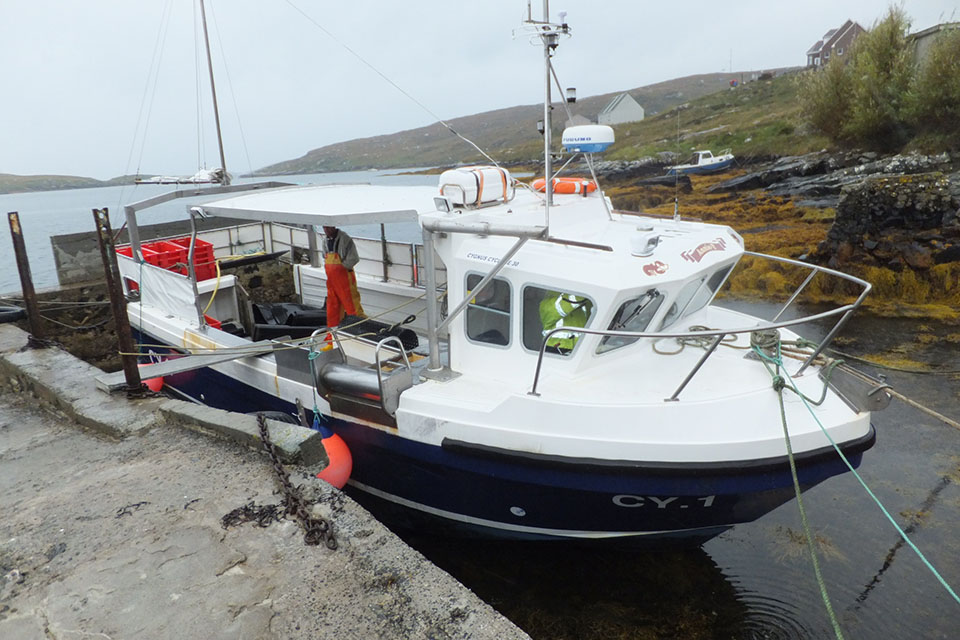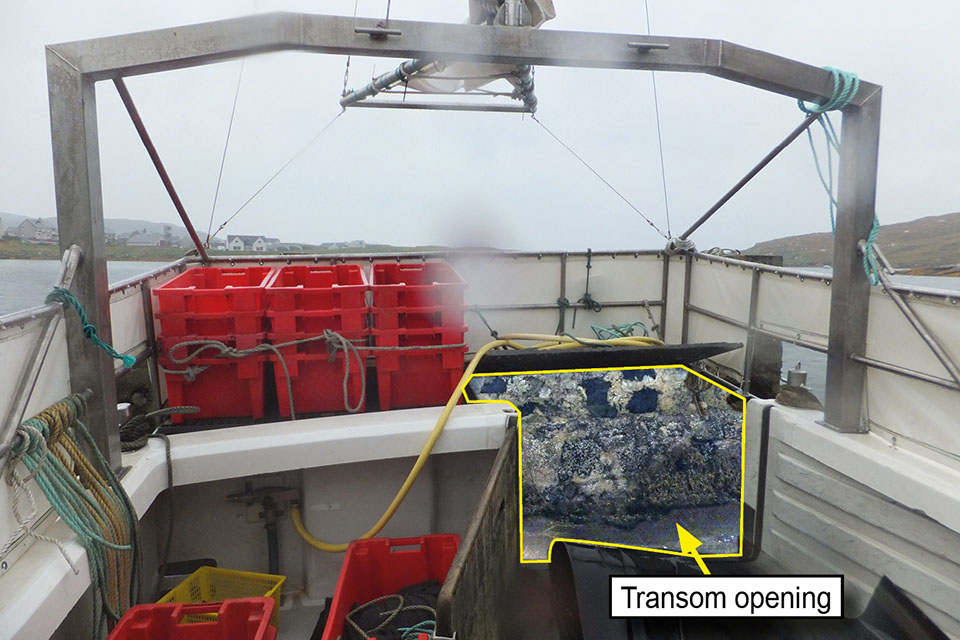Safety flyer to fishing industry and small craft users - Annie T
Published 3 November 2016
1. Summary
Annie T (CY 1) fatal man overboard accident on 4 October 2015

Figure 1: Fishing vessel Annie T
2. Narrative
On 4 October 2015, at about 1320, a crewman from the 9.15m long creel fishing vessel Annie T (Figure 1), was carried overboard by the fishing gear when his foot became caught in a bight of rope. He was not wearing a lifejacket when he fell through the shooting hatch at the aft of the vessel (Figure 2). At the time of the accident, the vessel was in the sound of Mingulay, at the southern edge of the Western Isles of Scotland.
The skipper was able to manoeuvre Annie T back to the crewman in the water and attempted to hoist him on board with the hauler. Unfortunately, the crewman was unable to hold onto the rope and fell back into the water. About 2 minutes later the skipper saw him floating face down in the water some metres away and on this occasion was able to recover him back on board using the hauler. Unfortunately, despite the best efforts of the skipper and the attending lifeboat and helicopter crews, the crewman could not be revived. The postmortem report stated that the crewman might have suffered a cardiac arrest.

Figure 2: Transom, showing opening for shooting creels
The MAIB investigation revealed the following:
- Working practices on board Annie T required a crewman to physically lift the end weight on the back rope and carry it aft to the shooting hatch in order to prevent the weight from damaging the vessel during shooting operations.
- The skipper and the crew members of Annie T never wore lifejackets.
- Three working lifejackets that had been supplied to Annie T’s crew free of charge by the Scottish Fishing Federation were still in their original packaging and had never been used.
3. Safety lessons
-
On small potting vessels space on deck can be very limited, especially when it is stacked with creels, piles of ropes and trays of catch. During shooting, it is not unusual for the gear to become tangled up and move in unexpected ways across the deck. The only way to stay safe is to separate the crew from the running gear during shooting operations.
-
It is extremely difficult to recover a man overboard casualty, and the casualty is unlikely to be able to help themselves. Regular manoverboard drills using a representative dummy will help prepare skippers and crew for dealing with such an emergency.
-
Falling into water below 15ºC will immediately lead to cold water shock. This causes a gasp reflex as the body comes into contact with the water, along with hyperventilation and a dramatic increase in heart rate and blood pressure that can lead to cardiac arrest. This is quickly followed by cold incapacitation with progressive loss of controlled movement of arms and legs. Unless a lifejacket is worn, death by drowning will occur, regardless of the casualty’s ability to swim in warmer water. Onset of hypothermia will normally occur after 30 minutes in cold water.
-
Always wear a lifejacket while working on exposed decks. Should you enter the water, it can save your life by:
- keeping you afloat and your face clear of the water, allowing you to breathe
- reducing the load on your heart as you won’t have to struggle to swim
- assisting those recovering you by providing them with something to grab onto
- increasing your visibility in the water, helping your rescuers find you
- providing additional insulation, helping to keep you warm for longer
Our accident investigation report is available at: https://www.gov.uk/maib-reports/man-overboard-from-creel-fishing-vessel-annie-t-with-loss-of-1-life
For all general enquiries:
Marine Accident Investigation Branch
First Floor, Spring Place
105 Commercial Road
Southampton
SO15 1GH
Email iso@maib.gov.uk
Enquiries during office hours +44 (0)23 8039 5500

